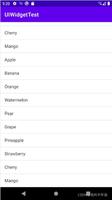View Binding 与Kotlin委托属性的巧妙结合,告别垃圾代码!

正文
ViewBinding 是Android Studio 3.6中添加的一个新功能,更准确的说,它是DataBinding 的一个更轻量变体,为什么要使用View Binding 呢?答案是性能。许多开发者使用Data Binding库来引用Layout XML中的视图,而忽略它的其他强大功能。相比来说,自动生成代码ViewBinding其实比DataBinding 性能更好。但是传统的方式使用View Binding 却不是很好,因为会有很多样板代码(垃圾代码)。
View Binding 的传统使用方式
让我们看看Fragment 中“ViewBinding”的用法。我们有一个布局资源profile.xml。View Binding 为布局文件生成的类叫ProfileBinding,传统使用方式如下:
class ProfileFragment : Fragment(R.layout.profile) {private var viewBinding: ProfileBinding? = null
override fun onViewCreated(view: View, savedState: Bundle?) {
super.onViewCreated(view, savedInstanceState)
viewBinding = ProfileBinding.bind(view)
// Use viewBinding
}
override fun onDestroyView() {
super.onDestroyView()
viewBinding = null
}
}
有几点我不太喜欢:
- 创建和销毁
viewBinding的样板代码 - 如果有很多Fragment,每一个都要拷贝一份相同的代码
viewBinding属性是可空的,并且可变的,这可不太妙
怎么办呢?用强大Kotlin来重构它。
Kotlin 委托属性结合ViewBinding
使用Kotlin委托的属性,我们可以重用部分代码并简化任务(不明白委托属性的,可以看我(译者)以前的文章:一文彻底搞懂Kotlin中的委托),我用它来简化·ViewBinding的用法。用一个委托包装了ViewBinding`的创建和销毁。
class FragmentViewBindingProperty<T : ViewBinding>(private val viewBinder: ViewBinder<T>
) : ReadOnlyProperty<Fragment, T> {
private var viewBinding: T? = null
private val lifecycleObserver = BindingLifecycleObserver()
@MainThread
override fun getValue(thisRef: Fragment, property: KProperty<*>): T {
checkIsMainThread()
this.viewBinding?.let { return it }
val view = thisRef.requireView()
thisRef.viewLifecycleOwner.lifecycle.addObserver(lifecycleObserver)
return viewBinder.bind(view).also { vb -> this.viewBinding = vb }
}
private inner class BindingLifecycleObserver : DefaultLifecycleObserver {
private val mainHandler = Handler(Looper.getMainLooper())
@MainThread
override fun onDestroy(owner: LifecycleOwner) {
owner.lifecycle.removeObserver(this)
viewBinding = null
}
}
}
/**
* Create new [ViewBinding] associated with the [Fragment][this]
*/
@Suppress("unused")
inline fun <reified T : ViewBinding> Fragment.viewBinding(): ReadOnlyProperty<Fragment, T> {
return FragmentViewBindingProperty(DefaultViewBinder(T::class.java))
}
然后,使用我们定义的委托来重构ProfileFragment:
class ProfileFragment : Fragment(R.layout.profile) {private val viewBinding: ProfileBinding by viewBinding()
override fun onViewCreated(view: View, savedInstanceState: Bundle?) {
super.onViewCreated(view, savedInstanceState)
// Use viewBinding
}
}
很好,我们去掉了创建和销毁ViewBinding的样板代码,现在只需要声明一个委托属性就可以了,是不是简单了?但是现在还有点问题。
问题来了
在重构之后,onDestroyView 需要清理掉viewBinding中的View。
class ProfileFragment() : Fragment(R.layout.profile) {private val viewBinding: ProfileBinding by viewBinding()
override fun onDestroyView() {
super.onDestroyView()
// Clear data in views from viewBinding
// ViewBinding inside viewBinding is null
}
}
但是,结果是,我得到的在委托属性内对ViewBinding的引用为null。原因是Fragment的ViewLifecycleOwner通知更新lifecycle的ON_DESTROY事件时机,该事件发生在Fragment.onDestroyView()之前。这就是为什么我仅在主线程上的所有操作完成后才需要清除viewBinding。可以使用Handler.post完成。修改如下:
class FragmentViewBindingProperty<T : ViewBinding>(private val viewBinder: ViewBinder<T>
) : ReadOnlyProperty<Fragment, T> {
private var viewBinding: T? = null
private val lifecycleObserver = BindingLifecycleObserver()
@MainThread
override fun getValue(thisRef: Fragment, property: KProperty<*>): T {
checkIsMainThread()
this.viewBinding?.let { return it }
val view = thisRef.requireView()
thisRef.viewLifecycleOwner.lifecycle.addObserver(lifecycleObserver)
return viewBinder.bind(view).also { vb -> this.viewBinding = vb }
}
private inner class BindingLifecycleObserver : DefaultLifecycleObserver {
private val mainHandler = Handler(Looper.getMainLooper())
@MainThread
override fun onDestroy(owner: LifecycleOwner) {
owner.lifecycle.removeObserver(this)
// Fragment.viewLifecycleOwner call LifecycleObserver.onDestroy() before Fragment.onDestroyView().
// That's why we need to postpone reset of the viewBinding
mainHandler.post {
viewBinding = null
}
}
}
}
这样,就很完美了。
Android的新库ViewBinding是一个去掉项目中findViewByid()很好的解决方案,同时它也替代了著名的Butter Knife。ViewBinding 与Kotlin委托属性的巧妙结合,可以让你的代码更加简洁易读。完整的代码可以查看github:https://github.com/kirich1409...
以上是 View Binding 与Kotlin委托属性的巧妙结合,告别垃圾代码! 的全部内容, 来源链接: utcz.com/a/47653.html








